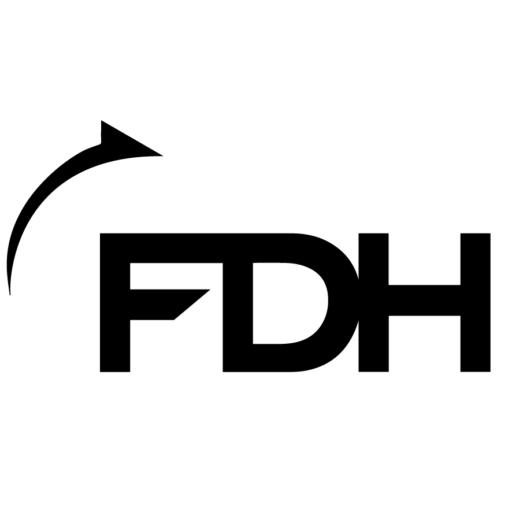 |
FDH Electronics |
||
|
Shipping Address: |
Billing Address: |
Toll Free: 800. 324.6591 |
|
DESIGNED TO DELIVER THE INVENTORY YOU NEED
| Cable Size | 0.50 to 0.62 in |
|---|---|
| National Stock Number (NSN) | 5970-01-500-6564 |
| Note | For cable sizes beyond this table range please contact Whitmor Wirenetics for recommended procedures. |
| Caution | Prior to beginning any work on production assemblies it is suggested that installers practice using this material and instructions on mockup assemblies. Personnel familiar with installing heat shrinkable tubing will be aware of some of the general do’s and don’ts when installing these types of materials. However, working with a split heat shrinkable material and a pressure sensitive adhesive presents some different handling requirements from standard tubing. Good results will be obtained by closely following the installation procedure below. |
|---|---|
| Measure Cable O.D. | Measure the outside diameter of the cable you want to cover. (Photo #1) |
| Photo #1 | |
| Install WZ Around Cable | Find your cable diameter in column one of the WZ Sizing Chart. Select the corresponding WZ tubing size from column two. If the cable OD is near the high end of a cable size, it is desirable to select the next larger WZ size. Using the larger size will yield a jacket with the least residual stress when fully recovered. Note: Selecting a WZ tubing size smaller than recommended in the sizing chart may result in the material opening up during the heating process. Install the WZ tubing around the cable so the paper release liner covering the adhesive faces away from the wiring and towards the installer. Peel back the first inch or two of the release liner and expose the adhesive. Position the non-adhesive edge of the tubing over the exposed adhesive and align so that the edge covers all of the adhesive. Begin bonding the tubing overlap to the adhesive. Avoid contacting the adhesive with your fingers as much as possible. Once the first inch or two of the overlap has been sealed, continue removing short sections of the release liner and seal the entire tubing length. Avoid creating wrinkles in the overlap area. Once the entire piece of tubing has been installed, rub the overlap seam firmly using your thumb to insure contact and work out any wrinkles. Minor wrinkles will disappear when the tubing shrinks. (Photo # 2) WZ tubing requires the use of a hot air type of heat gun with a temperature setting of +194 F (+90 C) minimum for proper tubing recovery. Note: You can shrink the tubing in place immediately after sealing if desired. The adhesive system has no cure time requirements. Before applying any heat to the WZ tubing it is desirable to position the tubing overlap seam along the outside of any cable bend radius. This will create a double thick layer of tubing material where cable chafing is most likely to occur. You may locate the overlap on the inside of a bend radius if necessary, however, wrinkles may form if the bend radius is too tight. If wrinkles do form in this area you may be able to work them out using a smooth mandrel while the tubing is still hot. |
| Photo #2 | |
| Caution | WZ tubing requires a two step heat application process. The adhesive overlap area must be heat-set prior to complete tubing recovery. Therefore, Do not use a tubing heat reflector or other device intended to spread heat uniformly around the tubing! |
| Shrinking WZ Tubing | Begin by directing the heat source at the adhesive overlap area several inches back from the tubing end. Apply the heat to the adhesive overlap area only! The overlap area will tend to curl up into a “U” shape as it is heated. Continue applying heat to this area until the surrounding tubing begins to pull the “U” shape back down flat. Do not be afraid to apply extra heat to the overlap area, as it will take extra dwell time to get the inner layer of the overlap to begin to shrink. Do not be alarmed if the outer layer of the overlap flap tends to lift off the adhesive and curl back slightly during initial heat exposure. With continued heating this lifted area will generally lay back down on its own, if not, lightly tap the lifted edge with your finger. Shrink the entire overlap length before attempting to recover the remaining tubing. (Photo #3) |
| Photo #3 | |
| Remove Excess Adhesive/Finished Assembly | Once the overlap area has fully recovered begin shrinking the remainder of the tubing circumference. With small diameter tubing sizes you may find that most of the remaining tubing has already shrunk. Visually examine the entire circumference of the WZ tubing and apply localized heat to any areas that show evidence of insufficient heating (fisheyes). While the tubing is hot you may work or form the WZ tubing and cable as necessary. Once properly positioned, allow the finished assembly to cool to the point of being warm to the touch. The finished assembly may have a shiny, sticky area, parallel to the overlap seam. This is residual adhesive that was exposed as the overlap material pulled back as it shrunk. The excess adhesive can be removed while the tubing is warm by rubbing your thumb along the overlap seam line. Rubbing the seam area will insure good overlap contact and the excess adhesive will ball up ahead of your thumb. Remove excess adhesive. (Photo #4, #5 & #6) |
| Caution | Do not attempt to clean the overlap area of excess adhesive with solvents. The adhesive system used is extremely solvent resistant. |
| Photo #4 | |
| Photo #5 | |
| Photo #6 |